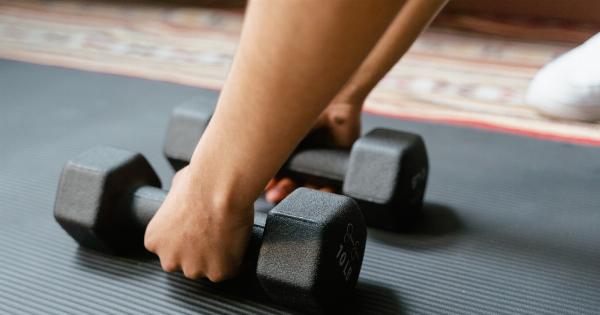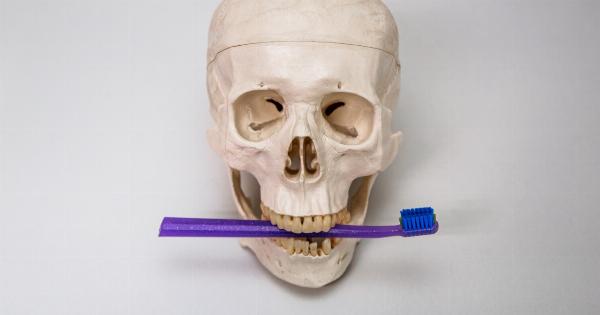Osteoporosis is a condition characterized by weak and brittle bones, often resulting in fractures and bone loss. It primarily affects older individuals, particularly postmenopausal women, but can also occur in men.
While certain risk factors such as age, gender, and family history cannot be changed, there are several lifestyle modifications and interventions that can help prevent osteoporosis and maintain bone health. In this article, we will discuss ten effective ways to prevent osteoporosis and strengthen bones.
1. Consume an Adequate Amount of Calcium
Calcium is an essential mineral that plays a vital role in maintaining strong and healthy bones. It is the primary building block of bones and teeth. Consuming an adequate amount of calcium-rich foods is crucial for preventing osteoporosis.
Good sources of calcium include dairy products like milk, yogurt, and cheese, as well as leafy green vegetables like kale and broccoli. Aim for a daily intake of around 1,000 to 1,200 milligrams of calcium, depending on your age and gender.
2. Get Sufficient Vitamin D
Vitamin D is crucial for calcium absorption and helps in the development and maintenance of strong bones. The primary source of vitamin D is natural sunlight.
Spending some time outdoors each day, especially during the early morning or late afternoon, allows the body to produce vitamin D through the skin. Additionally, incorporating foods rich in vitamin D such as fatty fish (salmon, mackerel), egg yolks, fortified cereals, and dairy products can further increase vitamin D intake.
3. Engage in Weight-Bearing Exercises
Weight-bearing exercises are activities that require your bones and muscles to support your body’s weight. These exercises are particularly beneficial for improving bone density and strength.
Examples of weight-bearing exercises include walking, running, dancing, hiking, stair climbing, and weightlifting. Aim for at least 30 minutes of weight-bearing exercise most days of the week to promote bone health.
4. Include Strength Training in Your Exercise Routine
Strength training exercises, also known as resistance exercises, involve working against a force to stimulate muscle and bone growth. These exercises help strengthen muscles, which in turn support and protect the bones.
Incorporate exercises that target major muscle groups, such as squats, lunges, push-ups, and bicep curls, into your weekly routine. Start with lighter weights and gradually increase as your strength improves.
5. Maintain a Healthy Body Weight
Maintaining a healthy body weight is crucial for bone health. Both excessive weight loss and being underweight can increase the risk of developing osteoporosis.
Being underweight often means having lower bone density, making bones more susceptible to fractures. On the other hand, excess body weight can put excessive stress on the bones, leading to increased wear and tear. Strive for a healthy weight range through a balanced diet and regular physical activity.
6. Avoid Smoking and Limit Alcohol Intake
Smoking has been linked to an increased risk of osteoporosis. It negatively affects bone density and decreases calcium absorption in the body. Therefore, quitting smoking or avoiding tobacco altogether is essential for maintaining strong bones.
Similarly, excessive alcohol consumption can also harm bone health. It disrupts the balance of bone remodeling, leading to decreased bone density. Limit alcohol intake to moderate levels, which means up to one drink per day for women and up to two drinks per day for men.
7. Consume a Balanced Diet
Eating a balanced diet that includes a variety of nutrient-rich foods is crucial for overall health and bone strength.
In addition to consuming adequate calcium and vitamin D, ensure you are getting enough nutrients like magnesium, potassium, phosphorus, and vitamin K. Magnesium-rich foods include almonds, spinach, and black beans. Potassium can be found in foods such as bananas, sweet potatoes, and avocados. Good sources of phosphorus include lean meats, eggs, and dairy products.
Vitamin K can be obtained from leafy green vegetables, such as kale and spinach.
8. Limit Soda Consumption
Sodas and other carbonated beverages, especially colas, contain phosphoric acid, which can deplete calcium from the bones, leading to weaker bones over time.
Additionally, excessive soda consumption often replaces other calcium-rich beverages, further contributing to inadequate calcium intake. Limit the consumption of soda and opt for healthier alternatives such as water, herbal teas, or natural fruit juices instead.
9. Prioritize Falls Prevention
Falls are a common cause of bone fractures in older individuals with osteoporosis. Taking steps to prevent falls can significantly decrease the risk of fractures.
Ensure your living space is well-lit, remove hazards that may cause tripping and slipping, and install handrails or grab bars in areas prone to falls, such as bathrooms and staircases. Additionally, performing balance exercises regularly can help improve stability and reduce the likelihood of falls.
10. Consider Regular Bone Density Testing
Regular bone density testing, commonly known as a DXA scan, helps assess bone mineral density and determine the risk of fractures.
It is particularly recommended for postmenopausal women, but can also be useful for men or individuals with specific risk factors. The test results can guide your healthcare provider in determining the most appropriate prevention strategies and treatment options to optimize bone health.
Conclusion
Preventing osteoporosis and strengthening bones should be a priority for individuals of all ages.
By following these ten effective ways, including adopting a balanced diet, exercising, and avoiding unhealthy habits like smoking and excessive alcohol consumption, you can reduce the risk of osteoporosis and maintain strong and healthy bones throughout your life.































